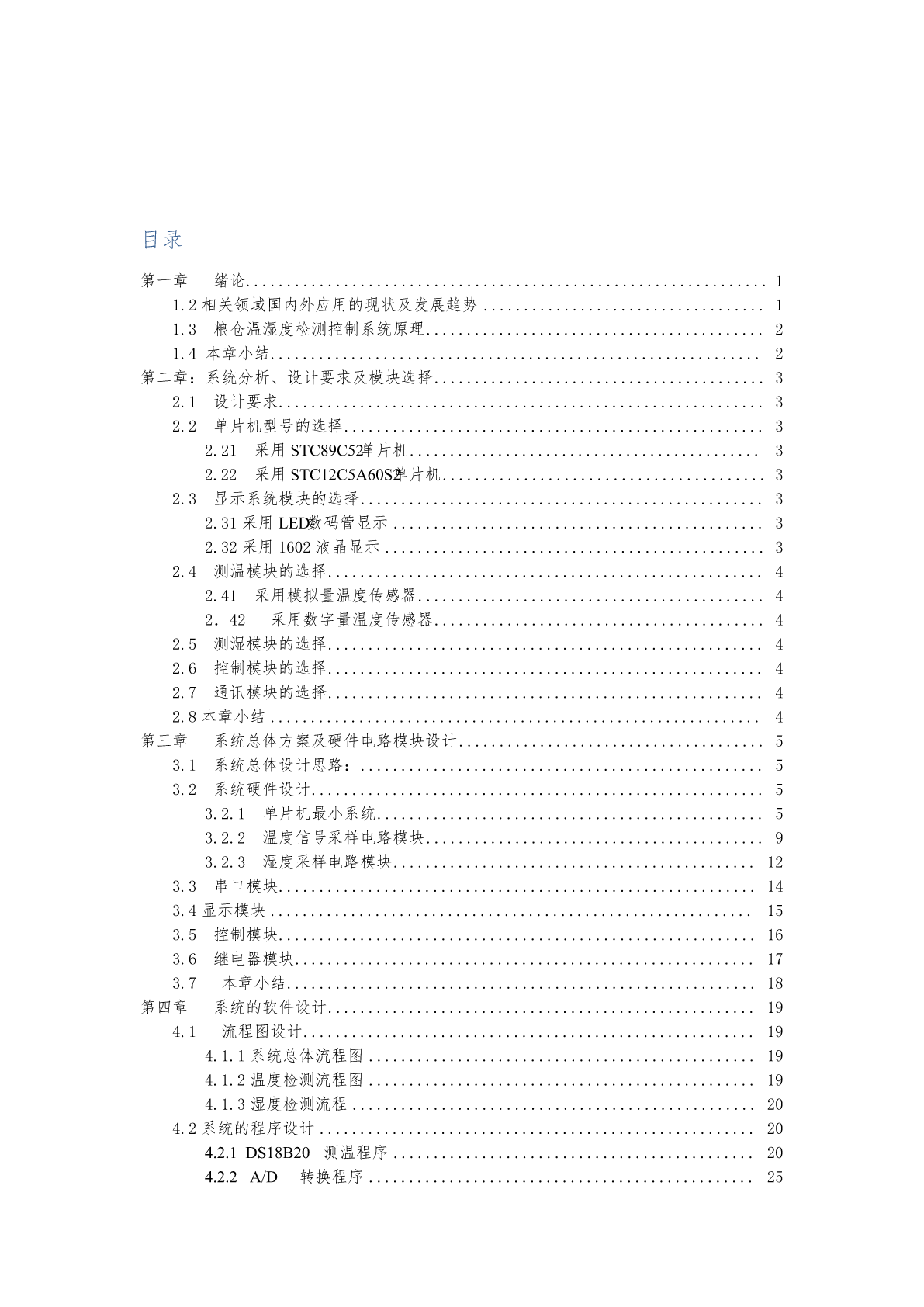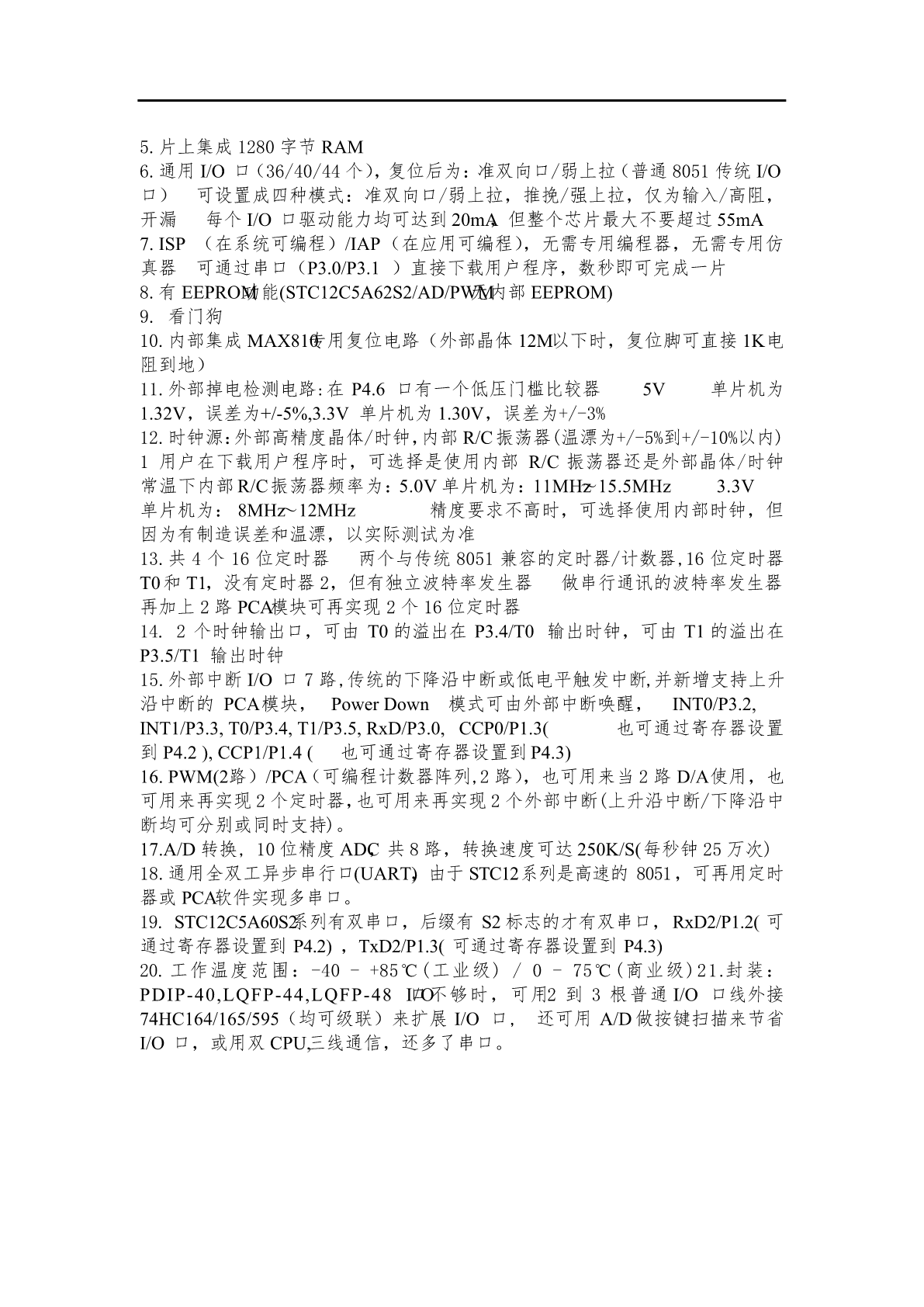
基于51单片机的粮仓温湿度检测系统毕业设计.pdf

17****27










亲,该文档总共36页,到这已经超出免费预览范围,如果喜欢就直接下载吧~
相关资料

基于51单片机的粮仓温湿度检测系统毕业设计.doc
基于51单片机的粮仓温湿度检测系统[摘要]粮仓温度湿度监测控制系统是基于STC12C52A60S2的数据采集、对比、控制的系统。以STC12C52A60S2单片机为控制器,对温度传感器DS18B20传送的数字量信号和对湿度传感器HR202传送的模拟量信号进行采集和处理,当前值和设定温度上限值进行对比,进而执行控制作用,通过对继电器的控制进而控制设备的启停,对粮仓温度湿度进行调节,使其维持在适当范围,维护粮仓正常运行。[关键词]单片机、温湿度、检测、控制Abstract:Thegranary’stemper

基于51单片机的粮仓温湿度检测系统毕业设计.pdf
基于51单片机的粮仓温湿度检测系统[摘要]粮仓温度湿度监测控制系统是基于STC12C52A60S2的数据采集、对比、控制的系统。以STC12C52A60S2单片机为控制器,对温度传感器DS18B20传送的数字量信号和对湿度传感器HR202传送的模拟量信号进行采集和处理,当前值和设定温度上限值进行对比,进而执行控制作用,通过对继电器的控制进而控制设备的启停,对粮仓温度湿度进行调节,使其维持在适当范围,维护粮仓正常运行。[关键词]单片机、温湿度、检测、控制Abstract:Thegranary’stemper

基于51单片机的粮仓温湿度检测系统毕业设计.doc
基于51单片机的粮仓温湿度检测系统[摘要]粮仓温度湿度监测控制系统是基于STC12C52A60S2的数据采集、对比、控制的系统。以STC12C52A60S2单片机为控制器,对温度传感器DS18B20传送的数字量信号和对湿度传感器HR202传送的模拟量信号进行采集和处理,当前值和设定温度上限值进行对比,进而执行控制作用,通过对继电器的控制进而控制设备的启停,对粮仓温度湿度进行调节,使其维持在适当范围,维护粮仓正常运行。[关键词]单片机、温湿度、检测、控制Abstract:Thegranary’stemper

基于51单片机的粮仓温湿度检测系统毕业设计.doc
基于51单片机的粮仓温湿度检测系统[摘要]粮仓温度湿度监测控制系统是基于STC12C52A60S2的数据采集、对比、控制的系统。以STC12C52A60S2单片机为控制器,对温度传感器DS18B20传送的数字量信号和对湿度传感器HR202传送的模拟量信号进行采集和处理,当前值和设定温度上限值进行对比,进而执行控制作用,通过对继电器的控制进而控制设备的启停,对粮仓温度湿度进行调节,使其维持在适当范围,维护粮仓正常运行。[关键词]单片机、温湿度、检测、控制Abstract:Thegranary’stemper

基于51单片机的粮仓温湿度检测系统毕业设计.doc
基于51单片机的粮仓温湿度检测系统[摘要]粮仓温度湿度监测控制系统是基于STC12C52A60S2的数据采集、对比、控制的系统。以STC12C52A60S2单片机为控制器,对温度传感器DS18B20传送的数字量信号和对湿度传感器HR202传送的模拟量信号进行采集和处理,当前值和设定温度上限值进行对比,进而执行控制作用,通过对继电器的控制进而控制设备的启停,对粮仓温度湿度进行调节,使其维持在适当范围,维护粮仓正常运行。[关键词]单片机、温湿度、检测、控制Abstract:Thegranary’stemper
